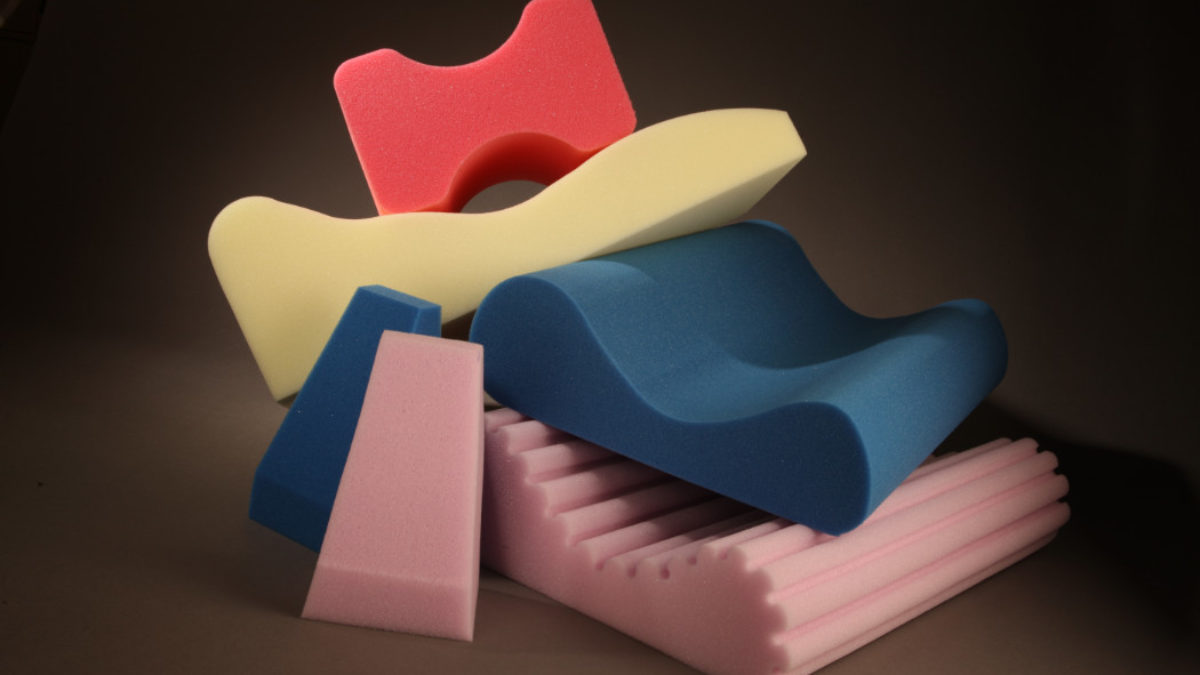The healthcare industry and foam manufacturing are more interlinked than many people can imagine. From medical product manufacturing to shipping, different types of foam have their uses in a variety of healthcare applications. But there isn’t a single type of foam that covers all applications in the healthcare industry. What works for foam mattresses and pillows is not necessarily ideal for custom orthotics or as packaging for the shipping of medical devices.
There are thousands of types of foam materials and properties ranging from density to porosity, durability, and compression. We can help you choose the right medical grade foam for any application, including:
- Mattresses and pillows
- Cushioning
- Custom orthotics
- Filtration and liquid management
- Packaging and shipping
Here are some of the major choices for medical foam applications.
Medical Cushioning and Orthotics Foams
The primary choice of foam for medical cushioning is open cell polyurethane. Open cell foams, which are known for their ability to compress and stretch, are commonly used because of the level of comfort and support they provide. They have a high tensile strength, which makes them durable when stretched and put under pressure, but they are also viscoelastic, which means the material will easily return to its normal shape after the force that is compressing it is removed. They also meet UL 94 safety standards for flame resistance and can easily be fabricated into any shape, size, and thickness.
Polyurethane foams come in two major types: ester polyurethane and ether polyurethane. Ester polyurethane is more rigid and supportive and has better shock absorption, but it is susceptible to hydrolysis and will break down in water. Ether polyurethane allows for more airflow and moisture permeability. It is more flexible and can be used in a wide range of products.
The second major choice for medical cushioning is polyethylene foam, which is a resilient closed cell foam that has great shock absorption and resistance to bacteria and mold. In certain cases, many types of medical cushioning will use both closed cell and open cell polyethylene, layered on top of one another, to achieve the proper comfort and feel of the product.
These types of foams can be used for everything from mattresses to medical cushions, pillows, wheelchair pads, pieces for orthotics bed rail pads, and fall injury prevention mats.
Reticulated Foam
Reticulated foams, foams with increased porosity, are often used in medical products and applications. Because of their many properties, which include filtration and fluid management, these types of foams can be used in many medical devices. Learn more about reticulated foam here (Link to reticulated foam blog post).
Vinyl Coatings
Foam positioners may also be coated with a vinyl spray product. This will extend product life and allow for a cleaning and sanitation between uses.
Medical Packaging and Shipping Foams
Foams used for medical device and pharmaceutical shipping need to have a few standout properties:
- Insulation
- Non-abrasiveness
- Resistant to chemicals
- No off-gassing
These types of foams make it possible for sensitive products to be transported without being damaged. They are also good at temperature control, which is a must-have for shipping certain types of pharmaceuticals.
Some major types of foam used for these applications include beaded polyethylene foam, crosslinked polyethylene foam, and expanded polystyrene foam. Zotefoams is also a great option because they are very clean and nitrogen expanded. This allows for little to no off-gassing and provides an excellent cell structure, which are both ideal for the stringent requirements of medical products.
We can help you with all your healthcare foam needs. For help choosing a foam type, or for custom fabrication, contact Amcon today.


